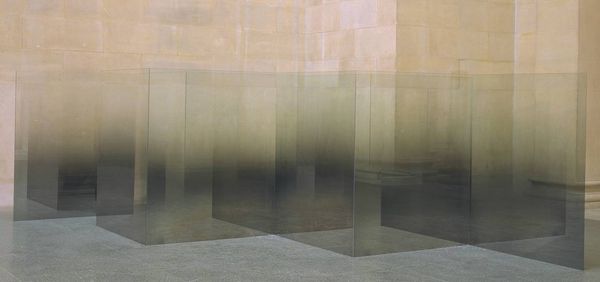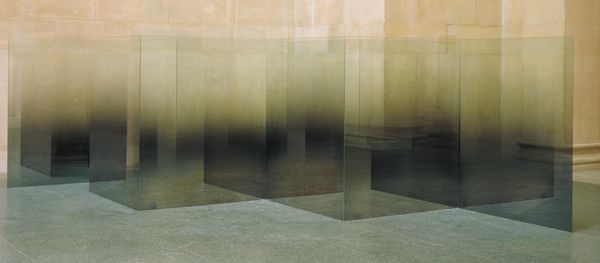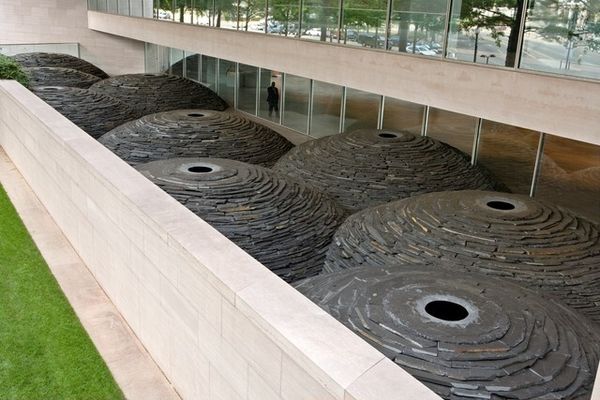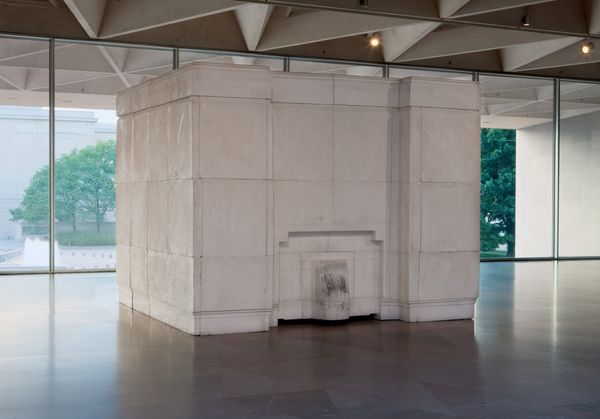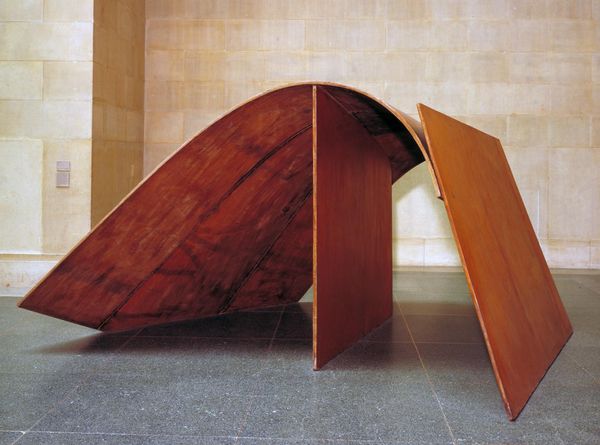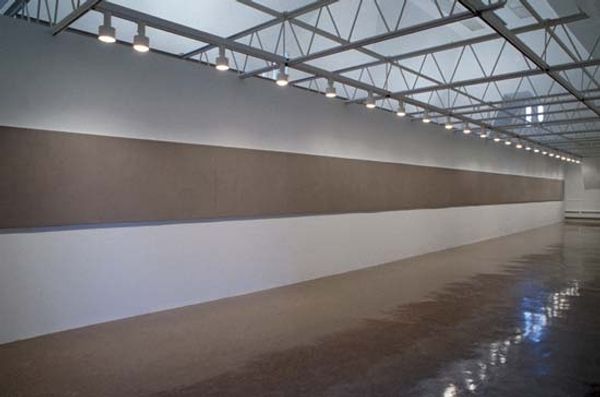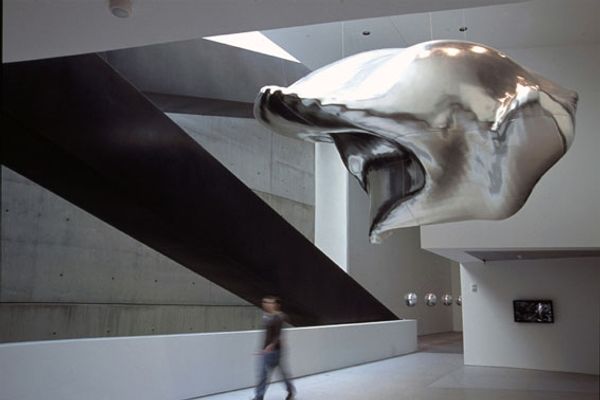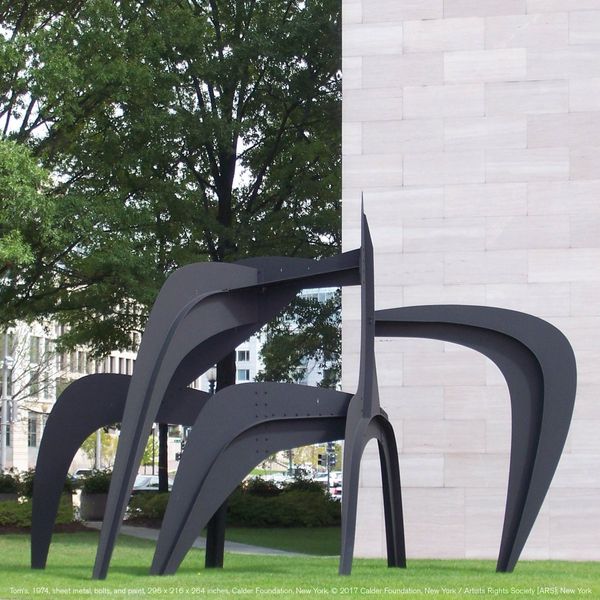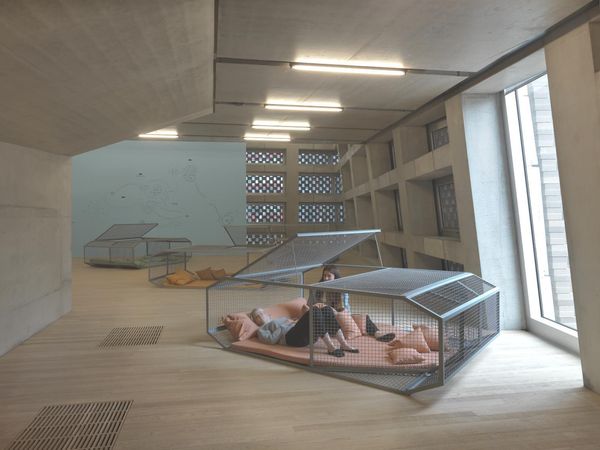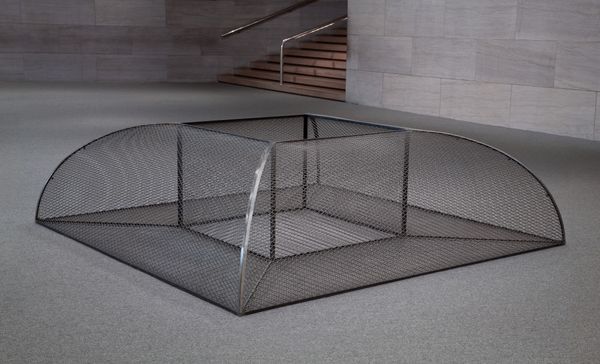
Dimensions: displayed: 2667 x 5003 x 10261 mm
Copyright: © Fondazione Merz | CC-BY-NC-ND 4.0 DEED, Photo: Tate
Editor: This is Mario Merz’s Igloo, Do We Go Around Houses, or Do Houses Go Around Us?, and it seems to question our relationship with shelter and the environment. What do you see in this piece, considering its historical context? Curator: Merz’s igloos, appearing in the late 20th century, challenge the monumentality of traditional sculpture and architecture. They use industrial materials like metal alongside natural elements like stone, reflecting a tension between progress and nature prevalent in post-war society. How does that juxtaposition strike you? Editor: It makes me think about the impermanence of our constructed world versus the enduring power of the natural world. Curator: Precisely. Merz’s work is deeply intertwined with Arte Povera, a movement critiquing the values of consumer culture. The igloo form, a symbol of nomadic life, contrasts sharply with the static nature of museums and galleries, doesn't it? Editor: Absolutely, it is a fascinating contrast that highlights how art institutions influence our perception of even basic forms of shelter. Curator: It’s a reminder that art doesn't exist in a vacuum; its meaning is always shaped by its surroundings. Editor: I hadn't considered the institution's impact so directly. Thanks!
Comments
tate 8 months ago
⋮
http://www.tate.org.uk/art/artworks/merz-igloo-do-we-go-around-houses-or-do-houses-go-around-us-t05755
Join the conversation
Join millions of artists and users on Artera today and experience the ultimate creative platform.
tate 8 months ago
⋮
'The igloo is the ideal organic form' according to Mario Merz, who equates it with the basic structures built by ancient nomadic cultures. This work addresses the theme of shelter and the relation of humans to their environment and community. Merz was part of the Arte Povera movement, which adopted a revolutionary stance against consumerist society, and deliberately made their work from humble materials. He began constructing igloos in 1968, in response to student and worker political demonstrations in Italy and France. The early igloos carried slogans linking them directly with the utopian ideals of the protesters. Gallery label, August 2004
